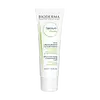What's inside
What's inside
 Key Ingredients
Key Ingredients

 Benefits
Benefits

 Concerns
Concerns

 Ingredients Side-by-side
Ingredients Side-by-side

Water
Skin ConditioningGlycerin
HumectantParaffinum Liquidum
EmollientEthylhexyl Palmitate
EmollientDipropylene Glycol
HumectantXylitol
HumectantBis-PEG/PPG-16/16 PEG/PPG-16/16 Dimethicone
EmollientSodium Acrylate/Sodium Acryloyldimethyl Taurate Copolymer
Emulsion StabilisingIsohexadecane
EmollientCaprylic/Capric Triglyceride
MaskingGlycyrrhetinic Acid
Skin ConditioningTocopheryl Acetate
AntioxidantPolysorbate 80
EmulsifyingDisodium EDTA
Allantoin
Skin ConditioningFructooligosaccharides
HumectantMannitol
HumectantPropylene Glycol
HumectantCetrimonium Bromide
AntimicrobialCeramide NP
Skin ConditioningRhamnose
HumectantGinkgo Biloba Leaf Extract
Skin ConditioningDodecyl Gallate
AntioxidantLaminaria Ochroleuca Extract
Skin ConditioningParfum
MaskingWater, Glycerin, Paraffinum Liquidum, Ethylhexyl Palmitate, Dipropylene Glycol, Xylitol, Bis-PEG/PPG-16/16 PEG/PPG-16/16 Dimethicone, Sodium Acrylate/Sodium Acryloyldimethyl Taurate Copolymer, Isohexadecane, Caprylic/Capric Triglyceride, Glycyrrhetinic Acid, Tocopheryl Acetate, Polysorbate 80, Disodium EDTA, Allantoin, Fructooligosaccharides, Mannitol, Propylene Glycol, Cetrimonium Bromide, Ceramide NP, Rhamnose, Ginkgo Biloba Leaf Extract, Dodecyl Gallate, Laminaria Ochroleuca Extract, Parfum
Water
Skin ConditioningGlycerin
HumectantDicaprylyl Ether
EmollientGlycol Palmitate
EmulsifyingButylene Glycol
HumectantCetyl Palmitate
EmollientGlyceryl Stearate Citrate
EmollientSqualane
EmollientSucrose Stearate
EmollientTridecyl Trimellitate
EmollientGlyceryl Dibehenate
EmollientPolysorbate 60
EmulsifyingPentylene Glycol
Skin ConditioningTribehenin
EmollientGlyceryl Behenate
EmollientAcrylates/C10-30 Alkyl Acrylate Crosspolymer
Emulsion StabilisingCaprylyl Glycol
EmollientCarnosine
Skin ConditioningHydroxyethyl Acrylate/Sodium Acryloyldimethyl Taurate Copolymer
Emulsion StabilisingMannitol
HumectantXylitol
HumectantTocopherol
AntioxidantSalvia Miltiorrhiza Flower/Leaf/Root Extract
Skin ConditioningRhamnose
HumectantGlycine Soja Oil
EmollientSorbitan Isostearate
EmulsifyingSodium Hydroxide
BufferingPalmitoyl Tetrapeptide-10
Skin ConditioningWater, Glycerin, Dicaprylyl Ether, Glycol Palmitate, Butylene Glycol, Cetyl Palmitate, Glyceryl Stearate Citrate, Squalane, Sucrose Stearate, Tridecyl Trimellitate, Glyceryl Dibehenate, Polysorbate 60, Pentylene Glycol, Tribehenin, Glyceryl Behenate, Acrylates/C10-30 Alkyl Acrylate Crosspolymer, Caprylyl Glycol, Carnosine, Hydroxyethyl Acrylate/Sodium Acryloyldimethyl Taurate Copolymer, Mannitol, Xylitol, Tocopherol, Salvia Miltiorrhiza Flower/Leaf/Root Extract, Rhamnose, Glycine Soja Oil, Sorbitan Isostearate, Sodium Hydroxide, Palmitoyl Tetrapeptide-10
 Reviews
Reviews

Ingredients Explained
These ingredients are found in both products.
Ingredients higher up in an ingredient list are typically present in a larger amount.
Glycerin is already naturally found in your skin. It helps moisturize and protect your skin.
A study from 2016 found glycerin to be more effective as a humectant than AHAs and hyaluronic acid.
As a humectant, it helps the skin stay hydrated by pulling moisture to your skin. The low molecular weight of glycerin allows it to pull moisture into the deeper layers of your skin.
Hydrated skin improves your skin barrier; Your skin barrier helps protect against irritants and bacteria.
Glycerin has also been found to have antimicrobial and antiviral properties. Due to these properties, glycerin is often used in wound and burn treatments.
In cosmetics, glycerin is usually derived from plants such as soybean or palm. However, it can also be sourced from animals, such as tallow or animal fat.
This ingredient is organic, colorless, odorless, and non-toxic.
Glycerin is the name for this ingredient in American English. British English uses Glycerol/Glycerine.
Learn more about GlycerinMannitol is a sugar alcohol. It is a humectant and moisturizes the skin. In vitro (not tested on a living organism), mannitol displays antioxidant properties.
When found in aqueous solutions, mannitol tends to become acidic. This is because it loses a hydrogen ion. This is why mannitol can often be found with pH adjusting ingredients, such as sodium bicarbonate.
Fun fact: Mannitol can be found in foods as a sweetener. It can be naturally found in mushrooms, algae, fruits, and veggies.
Learn more about MannitolWe don't have a description for Rhamnose yet.
Water. It's the most common cosmetic ingredient of all. You'll usually see it at the top of ingredient lists, meaning that it makes up the largest part of the product.
So why is it so popular? Water most often acts as a solvent - this means that it helps dissolve other ingredients into the formulation.
You'll also recognize water as that liquid we all need to stay alive. If you see this, drink a glass of water. Stay hydrated!
Learn more about WaterXylitol is a humectant and prebiotic. It can help with dry skin.
In studies, xylitol has been shown to improve dry skin. It decreased transepidermal water loss, or when water passes through the skin and evaporates. Xylitol also showed to help improve the biomechanical properties of the skin barrier.
The prebiotic property of xylitol may also help reinforce our skin's natural microbiome. Having a healthy microbiome prevents infection by bad bacteria and helps with hydration.
As a humectant, Xylitol helps draw moisture from both the air and from deeper skin layers. This helps keep skin hydrated.
Xylitol is a sugar alcohol and commonly used as a sugar substitute. It is naturally occurring in plants such as strawberries and pumpkin.
Learn more about Xylitol